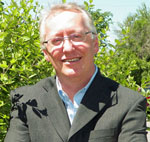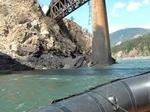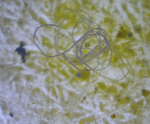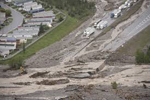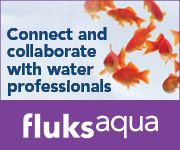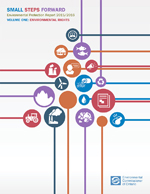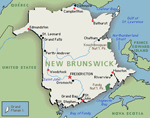Visit https://www.naylornetwork.com/cww-nwl/articles/index-v2.asp?aid=412831&issueID=47527 to view the full article online.
|
Visit https://www.naylornetwork.com/cww-nwl/articles/index-v2.asp?aid=412975&issueID=47527 to view the full article online.
|
Visit https://www.naylornetwork.com/cww-nwl/articles/index-v2.asp?aid=412913&issueID=47527 to view the full article online.
|
Visit https://www.naylornetwork.com/cww-nwl/articles/index-v2.asp?aid=412914&issueID=47527 to view the full article online.
|
Visit https://www.naylornetwork.com/cww-nwl/articles/index-v2.asp?aid=412915&issueID=47527 to view the full article online.
|
Visit https://www.naylornetwork.com/cww-nwl/articles/index-v2.asp?aid=412919&issueID=47527 to view the full article online.
|
Visit https://www.naylornetwork.com/cww-nwl/articles/index-v2.asp?aid=412921&issueID=47527 to view the full article online.
|
The Commissioner’s two-volume 2015/2016 Environmental Protection Report notes that "while the Ministry of Environmental and Climate Change (MOECC) .has, at last, begun posting public progress updates on its outstanding applications for review, it is still responsible for more than 400 outdated Environmenta Visit https://www.naylornetwork.com/cww-nwl/articles/index-v2.asp?aid=412929&issueID=47527 to view the full article online.
|
Visit http://www2.gnb.ca/content/dam/gnb/Departments/env/pdf/Water-Eau/WaterStrategySummaryOfComments.pdf to view the full article online.
|
Visit https://www.naylornetwork.com/cww-nwl/articles/index-v2.asp?aid=412931&issueID=47527 to view the full article online.
|
|
CBC
When Finance Minister Bill Morneau stood up in the House of Commons Tuesday to announce he would be adding tens of billions in additional money into an already hefty infrastructure plan, he had more than just conviction driving him. Visit http://www.cbc.ca/news/politics/survey-infrastructure-bill-morneau-1.3835923 to view the full article online. |
|
Bloomberg BNA
The Environmental Protection Agency has begun investigating whether state or local officials discriminated against Flint, Mich., residents in actions related to the city’s drinking water crisis. The federal agency wants to know whether Michigan’s Department of Environmental Quality, Genesee County and the city of Flint discriminated or had a discriminatory impact based on race, color, national origin or disability in notifying residents of the contamination in their tap water. Investigators will review whether government officials failed to implement procedures to comply with non-discrimination requirements. Visit http://www.bna.com/epa-conducting-civil-n57982082182/ to view the full article online. |
|
AWWA Water Utility Insider
The EPA has launched a suite of three new cyanotoxins management resources aimed at assisting water utilities in planning for, responding to and communicating about cyanobacteria and cyanotoxins events. Visit https://www.naylornetwork.com/cww-nwl/articles/index-v2.asp?aid=409500&issueID=47527 to view the full article online. |
|
Water canada
The Smart Prosperity Institute has released a report entitled New Solutions for Sustainable Stormwater Management in Canada. The report acts as a primer for municipalities in Canada on best practices in modernizing their stormwater infrastructure and taxation. Visit http://watercanada.net/2016/report-stormwater-solutions-for-municipalities/?utm_source=newsletter&utm_campaign=Droplet%20Oct%2031&utm_medium=email to view the full article online. |
|
Water Canada
A study by scientists at the University of Utah used water isotopes to track the cycle of postprecipitation water through urban water systems. In order to map the connections, the researchers collected and analyzed water samples from 800 taps across the Salt Lake Valley of northern Utah in semiannual water surveys from 2013–2015. Visit http://watercanada.net/2016/study-maps-tap-water-urban-water-systems/?utm_source=newsletter&utm_campaign=Droplet%20Oct%2031&utm_medium=email to view the full article online. |
|
TribTalk
Utility customers in drought-afflicted areas in Texas have lately been faced with what appears, on the surface, to be a paradox: watching their water bills go up even as they use less. The immediate math is simple. When utilities encourage conservation, customers use less water, which means less revenue for those utilities. But what few utilities and officials — not to mention increasingly frustrated headlines in Texas and across the country — point out is that in actuality, customers who conserve water are using less to pay less over time. Visit https://www.tribtalk.org/2016/10/20/taking-the-long-view-on-water-conservation-in-texas/ to view the full article online. |
|
AWWA Connecttions
Are the salary increases of water professionals keepSenior chemists at medium-sized utilities saw higher-than-average increases from last year to this year, as did senior water treatment operators at large utilities, who earn an average of $59,868. But salaries of the most experienced operators at medium-sized utilities remain relatively flat at $55,755.ing up with those of other employees? Well, that depends. Visit http://www.awwa.org/publications/connections/connections-story/articleid/4398/what-water-professionals-earn.aspx to view the full article online. |
|
InfoNews.ca
New wastewater system design guidelines developed at UBC can help municipal governments better protect aquatic life and save millions of dollars a year. In a recent study, engineers at UBC’s Okanagan campus developed guidelines that can tailor the design of specialized filters, called fluidized bed reactors, to local conditions and help prevent phosphorous deposits from forming in wastewater systems. Visit http://infotel.ca/newsitem/wastewater-research-may-help-protect-aquatic-life/it36993 to view the full article online. |
|
Waterloo Record
City hall staff want the province to give more priority to municipal water needs, as opposed to non-municipal needs such as Nestlé's water bottling in Aberfoyle. "Greater weight needs to be given to future municipal water supply requirements over non-municipal water-takings, in order to ensure groundwater-based municipalities like Guelph can achieve provincially mandated population and employment growth targets," says a memo written by city hall's top water officials that council will be asked to support on Nov. 28. Visit http://www.therecord.com/news-story/6976837-agenda-set-for-guelph-council-debate-on-water-taking-and-nestl-/ to view the full article online. |
|
CBC
Researchers from York University in Toronto have created a product that uses sugar to lure E. coli in drinking water into a deadly trap. DipTreat uses glucose to fish E. coli from water, traps the bacteria within a porous paper matrix, and kills them using the antimicrobial properties of moringa seed extract — commonly known as drumstick or horseradish tree. Visit http://www.cbc.ca/news/canada/north/york-university-researchers-e-coli-drinking-water-1.3853809 to view the full article online. |
|
WaterCanada
Ottawa has installed wireless sensors in its regions waterways as a part of a pilot project with Ericsson and Rogers Communications to monitor water quality in real-time. The pilot will leverage a combination of Internet of Things (IoT), cloud computing, and LTE mobile broadband technologies to gather real-time data that city staff can use to better predict, prevent, and respond to potential issues related to water quality, including cleanliness and abnormal temperatures. Visit http://watercanada.net/2016/internet-of-things-comes-to-water-management/ to view the full article online. |



